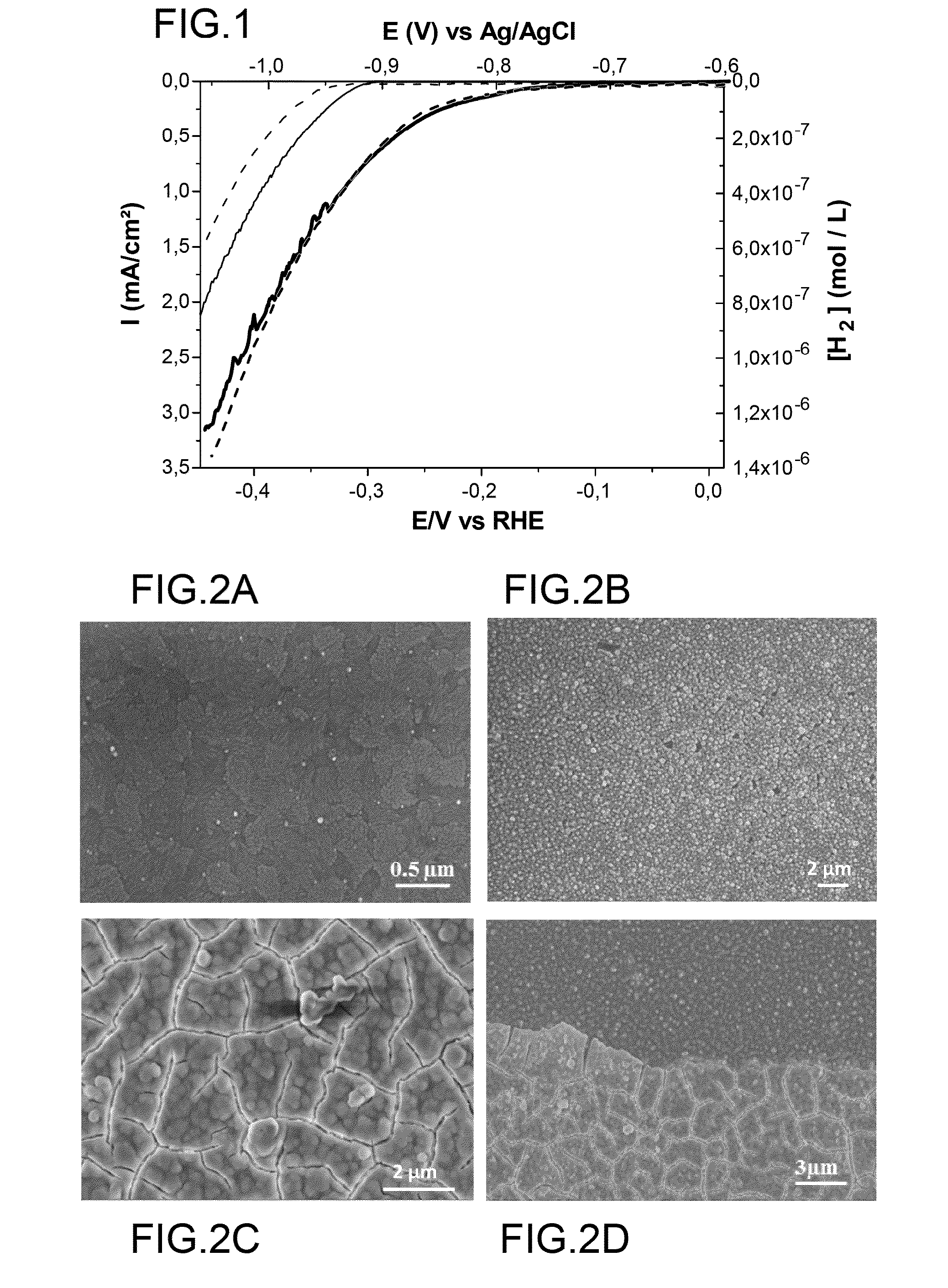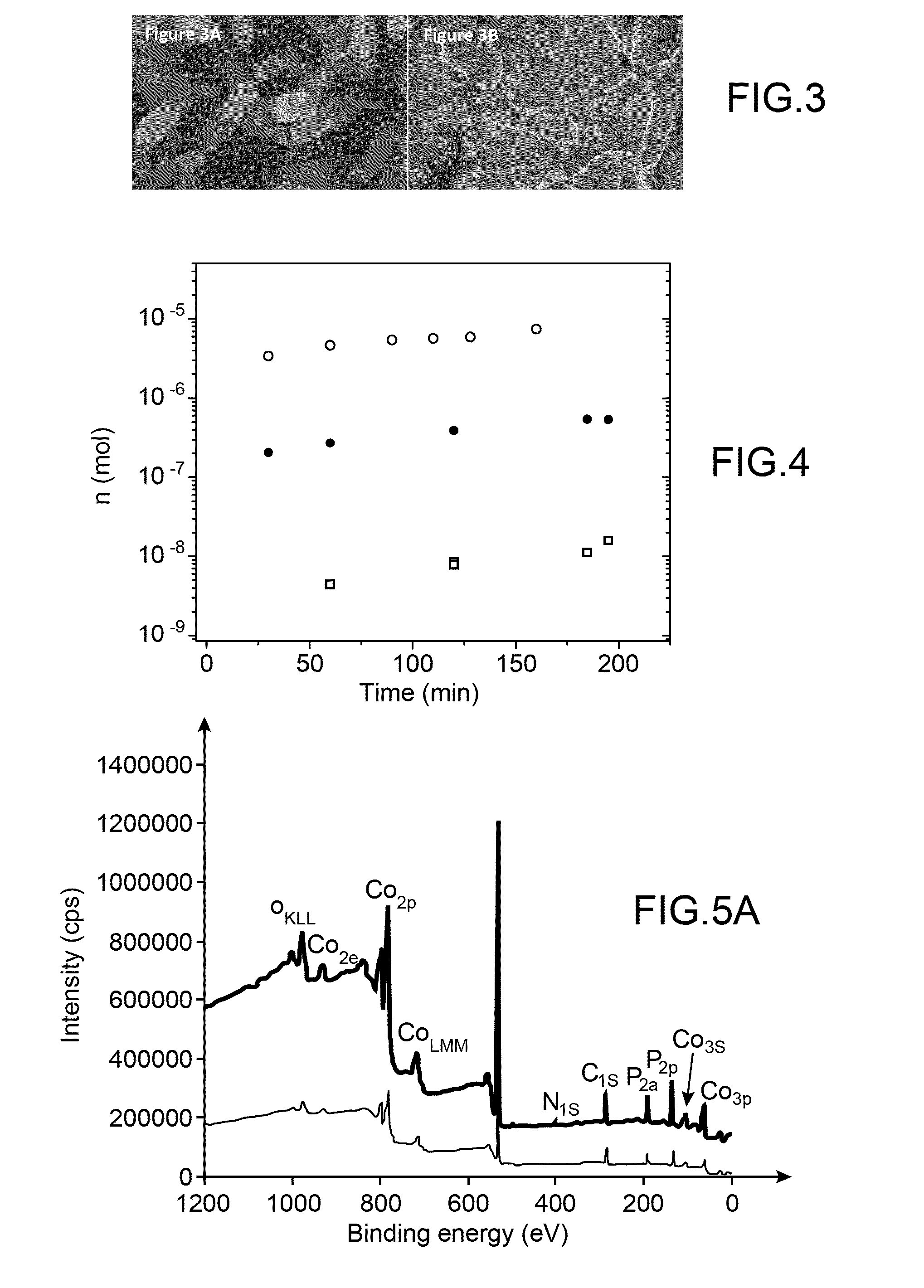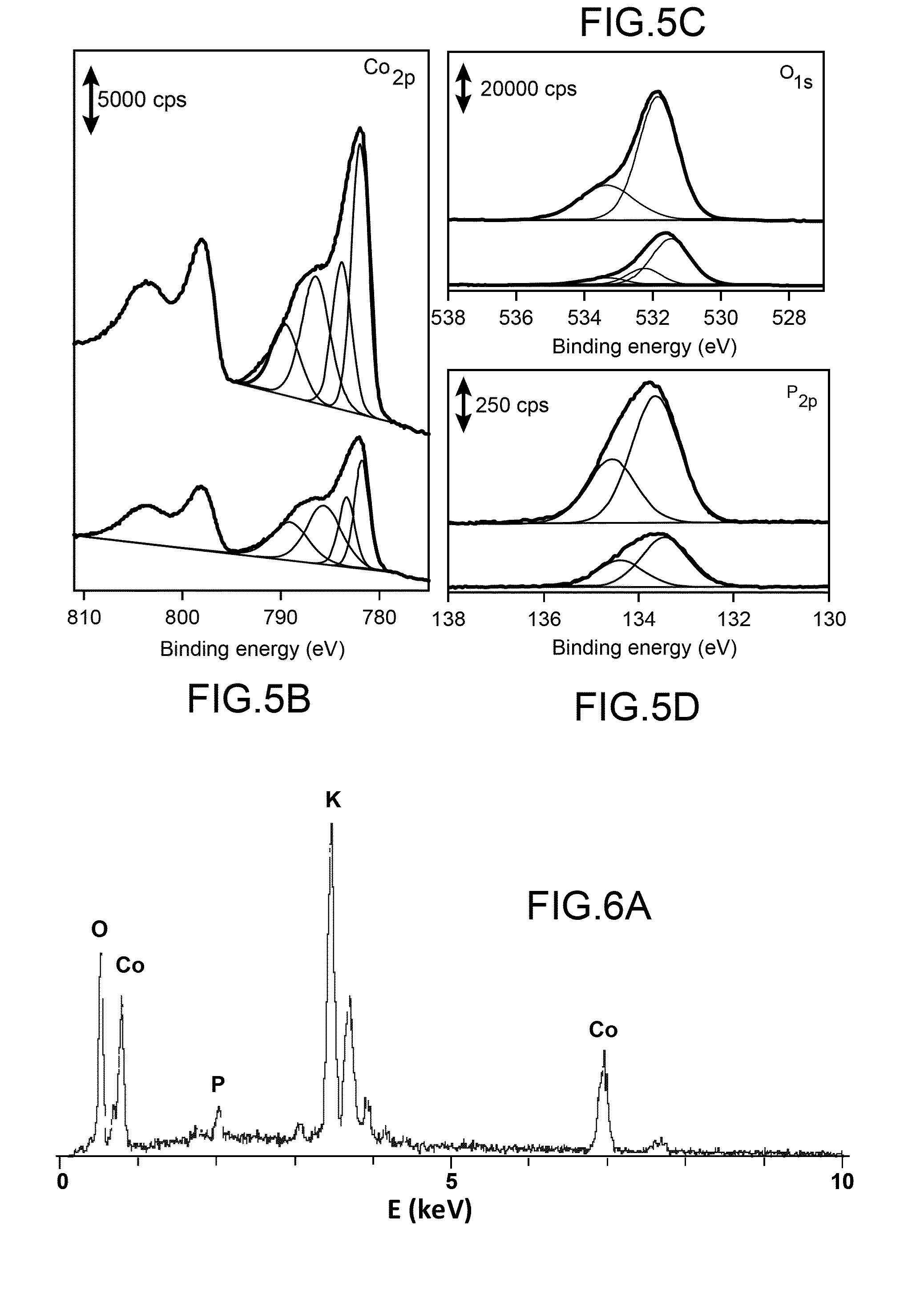Method for preparing a catalyst mediating h2 evolution, said catalyst and uses thereof
- Summary
- Abstract
- Description
- Claims
- Application Information
AI Technical Summary
Benefits of technology
Problems solved by technology
Method used
Image
Examples
Embodiment Construction
I. Experimental Section
[0107]I.1. Materials.
[0108]The cobalt complexes used hereinafter to prepare H2—CoCat are [Co(DO)(DOH)pnCl2] [15] and [Co(dmgBF2)2(H2O)2] with dmgH2 representing dimethylglyoxime [27] were prepared according to previously described procedure.
[0109]Fluorine doped tin oxide (FTO) coated glass slides with 7-10 0 / sq surface resistivity and a thickness of 6000 Å were purchased from Solems (France).
[0110]KH2PO4 (98-100.5%) and K2HPO4 (99%) were purchased from Carlo Erba and Acros Organics respectively. ZnCl2 (Fluka, purity >98%)) and KCl (Fluka, purity 99.5%) analytical reagent grade were used for ZnO preparation without further purification.
[0111]A three-electrode electrochemical cell was used for ZnO nanorods deposition on FTO substrates. The electrochemical growth was done at E=−1.0 V vs SCE, passed charge density 10 and 30 C·cm−2 and T=80° C.
[0112]Further details can be found in [28].
[0113]I.2. Methods.
[0114]X-ray photoemission spectroscopy (XPS) analyses were pe...
PUM
| Property | Measurement | Unit |
|---|---|---|
| Acidity | aaaaa | aaaaa |
| Electric potential / voltage | aaaaa | aaaaa |
| Electric potential / voltage | aaaaa | aaaaa |
Abstract
Description
Claims
Application Information
 Login to View More
Login to View More - R&D
- Intellectual Property
- Life Sciences
- Materials
- Tech Scout
- Unparalleled Data Quality
- Higher Quality Content
- 60% Fewer Hallucinations
Browse by: Latest US Patents, China's latest patents, Technical Efficacy Thesaurus, Application Domain, Technology Topic, Popular Technical Reports.
© 2025 PatSnap. All rights reserved.Legal|Privacy policy|Modern Slavery Act Transparency Statement|Sitemap|About US| Contact US: help@patsnap.com



